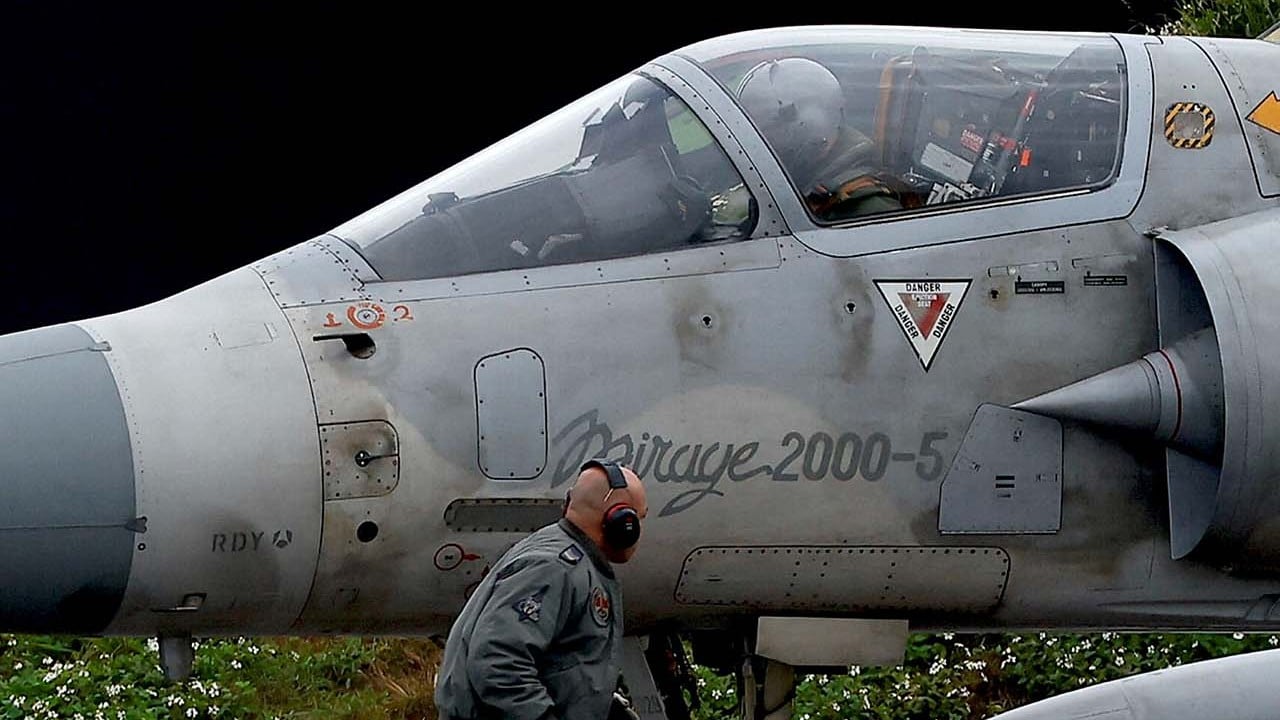
China and US flex military might around Taiwan as tensions flare between rivals
- Chinese military deploys fighter jets and warships after US Navy announces reconnaissance plane’s trip through Taiwan Strait
- Taipei says PLA jets have entered air defence identification zone but haven’t crossed median line
China and the United States have flexed their military might around Taiwan over the past three days, as tensions between the two rival powers flared up.
Online flight-checking platforms showed the US had also sent aerial refuelling aircraft and bombers near the area.
Taiwan’s defence ministry said it had detected 29 aircraft and four vessels from mainland China in the 24 hours ending at 6am on Thursday morning.
China protests after US Navy jet flies through Taiwan Strait
However, the ministry said none of the PLA aircraft had crossed the median line that serves as an unofficial barrier between the island and mainland China.
The US Seventh Fleet said it considered the Taiwan Strait an international waterway, and that operations like Monday’s transit would continue.
“The United States will continue to fly, sail and operate anywhere international law allows, including within the Taiwan Strait,” it said, adding that the plane was operating in “international airspace”.
On Monday, a flight radar tracking map showed three US Air Force KC-135R Stratotankers were in the Bashi Channel south of Taiwan. But the radar map had no clear timestamp, and US officials have not commented on the aerial refuelling aircraft deployment.
On Tuesday, Aircraft Spots, a Twitter account devoted to tracking military air movements, said US B-52 bombers were flying in the region on their way to join the Avalon Airshow in Australia on March 4.
Zhou Chenming, a researcher from the Beijing-based Yuan Wang military science and technology think tank, said it was possible that the PLA aircraft had been sent to intercept at least two US B-52 bombers from flying over the Bashi Channel on Tuesday.
“It’s the US military’s B-52 bombers forcing the PLA to scramble fighter jets to stop them from flying close to Taiwan, as the P-8A did on Monday,” Zhou said, adding that the moves would further escalate tensions in the strait.
US approves US$619 million sale of missiles and equipment to Taiwan
Mainland China and Taiwan split in 1949 at the end of a civil war, when the Nationalists were defeated by Communist Party forces and fled to Taipei.
As relations between the two sides have deteriorated, the PLA has regularly sent warplanes across the strait and into the island’s ADIZ, especially since former US House speaker Nancy Pelosi’s visit to Taipei in August.
On January 9, the PLA sent 57 planes and four warships to Taiwan for a joint naval and air force drill, with 23 of the aircraft crossing the median line, while 28 other warplanes appeared to block off three sides of the self-ruled island.
Beijing hits out at Blinken’s ‘irresponsible and absurd’ Taiwan comments
Fu Qianshao, a Chinese military aviation analyst, said the US had stepped up provocations by sending warplanes around Taiwan, posing a threat to mainland China’s airspace.
“The US has sent anti-submarine aircraft, reconnaissance aircraft and bombers, so we should be vigilant all the time to monitor their activities,” Fu said.
“It can be seen that the US military has stepped up activities. We will also inevitably increase the level of combat readiness, and once a threatening approach occurs, we will inevitably take relevant measures.”
According to Fu, the PLA’s activities around Taiwan were part of its regular training plan, but activity might increase in response to US provocations.
“Their activities around the Taiwan Strait are close to mainland China, which poses a threat to us,” Fu said. “Therefore, we increased our patrolling to prevent dangerous approaches into our airspace.”
Lu Li-shih, a former instructor at Taiwan’s Naval Academy in Kaohsiung, said the PLA’s response could be seen as part of its countermeasures to cope with US surveillance flights along mainland China’s southeastern coast.
“The US has tried to use [these] flights to achieve its strategy of ‘deterrence by detection’ in recent years to deter the PLA from expanding its military influence in the region,” Lu said.
However, the PLA deployments over the past few days showed the US strategy had failed, as Beijing had already come up with countermeasures to deter American reconnaissance flights and other provocations, Lu said.
Song Zhongping, a former PLA instructor, said the PLA would strengthen its countermeasures against intensified actions by the US.
“The US always wants to change the status quo in the Taiwan Strait,” Song said. “It will inevitably lead to intensified confrontations between China and the US.”
Additional reporting by Amber Wang


